How a mouse could help humans heal better
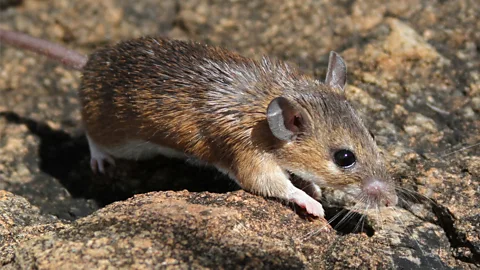 Ashley Seifert
Ashley SeifertFew mammals have the ability to regenerate a severed spinal cord and heal other severe injuries without scarring, but a diminutive rodent from Africa could hold the key to a medical revolution.
Monica Sousa, an experienced scientist, could barely believe her eyes. In the small plastic enclosure on the lab bench in front of her was a mouse that a few weeks before had been half-paralysed, its rear legs dragging behind it wherever it went.
Now it trotted around, and even jumped acrobatically, despite having received nothing but pain relief since its injury.
There was no real precedent for this. Mammals, from tiny rodents to humans, never usually recover from serious spinal cord or other central nervous system injuries. Except, it seems, for the African spiny mouse.
In recent years, scientists have discovered that this creature, found in arid habitats in African countries including Kenya, Somalia and Tanzania, has an extraordinary gift for regeneration. It can overcome devastating injuries to its skin, heart, kidneys and spinal cord.
No-one expected this, including the US-based scientists who discovered in 2012 that the spiny mouse could regenerate large areas of damaged skin.
"We were all completely amazed," says Sousa, an expert on nerve regeneration at the University of Porto, in Portugal, referring to the mouse's remarkable ability to repair its spinal cord, which she and colleagues documented in a study published earlier this year. The mice recovered from paralysis in a matter of weeks.
The African spiny mouse joins a special list of otherwise non-mammalian species known to be able to regenerate important parts of their bodies. Regeneration is a specific form of wound healing that replaces lost tissues more or less like-for-like, avoiding excessive scarring, so that the body part in question can function just as well as it did before. Axolotls, flatworms, zebrafish and some jellyfish can regenerate relatively large and complex parts of their bodies, for instance. And newly hatched alligators can regrow severed tails, according to a study published in 2020. But none of these animals are as closely related to us, genetically speaking, as the African spiny mouse.
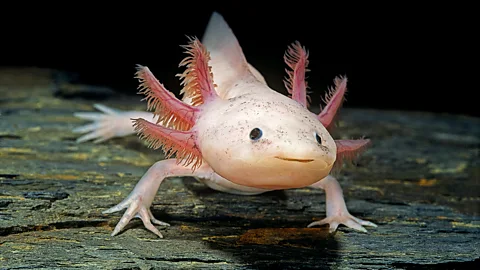 Paul Starosta/Getty Images
Paul Starosta/Getty ImagesMany researchers argue these animals may carry biological secrets that could help to revolutionise medicine and lead to treatments for life-changing traumas and degenerative diseases. There might be more than one Holy Grail here. However, there are no guarantees. And studying these animals raises ethical considerations, since scientists must deliberately wound them in order to find out how they respond. After decades of research on some of these animals, we may not be much closer to finding a way to regenerate key parts of our own bodies.
This is the story of how we discovered the extraordinary regenerative abilities of the African spiny mouse – and whether it could eventually help millions of people who suffer from debilitating conditions.
It was 2011 and Ashley Seifert, who was working at the University of Florida but is now at the University of Kentucky, was standing in a retired veterinarian's garden in Florida. The veterinarian in question, Elliott Jacobson, owned an outbuilding full of his pet snakes. Seifert wasn't interested in the snakes, though. He had had a tip-off that Jacobson also possessed a small colony of African spiny mice. The animals can be difficult to get hold of, though they have been sold as pets in the US. Jacobson obtained his spiny mice from someone at the Phoenix Zoo back in the 1990s and had bred them ever since. He had 40 of them and happily gave them all to Seifert. These animals formed the basis of a research colony Seifert has studied ever since.
Back then, though, Seifert was on something of a mission. He had already realised that African spiny mice had astounding abilities, after a colleague made a chance remark about the animals in conversation. Reports had circled in academic journals of a strange species of mouse in Africa that sometimes shed its skin very suddenly. Seifert wondered whether a mouse that could do such a thing might also possess impressive wound-healing abilities.
His first encounter with the animals was in Kenya, where he managed to trap some on a research trip. Having never handled any before, he soon found that even a reasonably gentle grip causes their skin, covered with robust, spiny hairs, to fall off.
By observing how they responded to this, and how they recovered when he made small holes in the skin of their ears in controlled experiments, he realised something incredible – African spiny mice bounce back from injuries like this with gusto. The cuts in their ears did not just heal by forming a patch of scar tissue to repair the wound, but instead, the new tissue came complete with hair follicles, body fat and cartilage. It merely lacked a layer of muscle.
"I was just really shocked looking through the microscope and seeing new hair growing back," recalls Seifert, who retrieved skin samples from the mice for analysis in the lab. During the same study, Seifert and colleagues also found that the skin of African spiny mice is abnormally weak. They calculated that a regular mouse from the mus genus has skin that is 20 times stronger. The team published the results of this work in 2012.
Having glimpsed the regenerative prowess of the mouse, Seifert made plans to study it further and was soon able to do so using the research colony he acquired from Jacobson in Florida.
In the 10 years or so since Seifert's discovery, a small number of other researchers have taken an interest in African spiny mice. A well-known paper published last year, for example, described how the rodents can recover from a serious kidney injury that would lead to complete organ failure in other species of mice.
Scientists hypothesise that spiny mice evolved to shed their skin in order to get away from predators attempting to snatch them. But there could be other reasons why regeneration helps them in the wild, perhaps allowing them to tolerate a large number of parasites, for instance. Whatever the reason, it is striking that they appear to have evolved this ability when so few mammals come close to it. However, in yet-to-be-published research, Seifert recently found that a closely related type of mouse, the brush-furred mouse, also seems to have similar regenerative capacities.
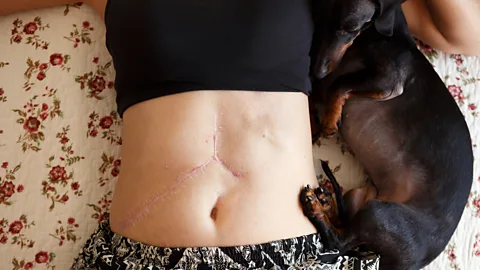 Alamy
AlamySince 2012, numerous scientists have built on Seifert's work. Their results continue to surprise him. The paper by Sousa and her colleagues on spinal cord regeneration was particularly startling, he explains, because in that case the researchers fully severed the spinal cords of about 10 African spiny mice in their experiment. All but three were observed to regain complete mobility – and the mice even did this after their spinal cord was cut in two, or transected, for a second time.
"My jaw dropped because I couldn't believe they did a full transection and got that kind of recovery," says Seifert.
It's worth noting that the clean cut of a surgical procedure might have been easier to recover from than a spinal injury in the wild, where the damage on and around the spine might be more difficult to heal. However, the fact that the mice's axons – the connecting cable of their nerve cells – appeared to regenerate remains impressive.
Sousa, like Seifert, heard about spiny mice purely by chance. A fellow researcher at the University of Porto happened to describe their regenerative abilities and mentioned that there was a colony of the mice at the University of Algarve, about 550km (341 miles) away on Portugal's south coast. Sousa sent some students to investigate.
With permission, they made some incomplete cuts in the spinal cords of the mice but when they returned later to check on them, they could barely tell which mice had been injured because their tissues had regenerated so well.
The experiments described here are clearly very invasive and some question the ethics of this kind of research. Notably, non-spiny mice in Sousa's study did not recover from the same spinal cord injuries.
When scientists in countries such as Portugal or the US do experiments like this, they must go through rigorous approval by ethics committees. Sousa stresses that all mice received pain relief and that their general well-being was considered at every step.
"Sometimes people think that scientists just use animals because they want to – it's not true," she explains. "In this particular case, the complexity of a spinal cord cannot yet be reproduced by any cell culture or other model."
But, wherever possible, the researchers who have experimented on live spiny mice in these studies say that they also hope to develop cell cultures to use in experiments instead of having to involve live animals.
One justification scientists often make for carrying out procedures like this is that such work could lead to life-changing drugs or other treatments for millions of people. It is never clear at the outset whether that will definitely happen, however, so it is worth considering whether there are any precedents which might indicate how studies of regeneration in animals could spark medical advances.
Most of the work in this area is, admittedly, very young. Scientists are still trying to verify the cellular mechanisms behind regeneration in various species. But we have gained some crucial insights. Take retinoids, for instance. These are substances such as retinol and retinoic acid that animals including humans make with the help of Vitamin A. Retinoids appear to help certain animals do some really fascinating things.
Take the species of sea cucumber, for example, that can regenerate its intestines. A 2019 study showed that retinoic acid was involved in this complex process. It also appears to help zebrafish regrow their fins.
Retinoids have actually been studied for decades and are used in medical treatments for various skin conditions including psoriasis. Many scientists argue that we still have much to learn about retinoids, especially considering their regenerative role in some animals.
Then there are pancreatic islet cells, which are attacked by the immune systems of people with type 1 diabetes, leaving them unable to produce the right amount of insulin. In the last decade or two, doctors have had some success in transplanting islet cells from deceased donors to people with type 1 diabetes. But research in (non-spiny) mice hints that doctors might be able to one day stimulate processes in the pancreas in order to encourage it to regenerate these cells instead. However, it is never clear whether an approach that proves successful in mice will actually work as intended in humans.
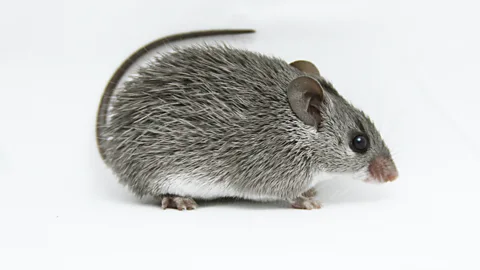 Ashley Seifert
Ashley SeifertThere are other ways in which animals with regenerative capabilities are benefitting medical research. Zebrafish larvae, which can regenerate their spinal cords like spiny mice, could be used to help test drugs designed to treat spinal cord injuries, according to a paper published in 2019.
"There are organisms out there that can regenerate remarkably well. I always find that really mind-blowing that animals can do this," says Johnny Kim, at the Max Planck Institute for Heart and Lung Research.
Despite this, he says he is not aware of any examples of medical treatments for heart conditions – the focus of his own research – that have yet derived directly from studying regenerative mechanisms in animals.
"My personal opinion on this is that, as a natural scientist, as a basic scientist, to understand the fundamentals of nature and biology in other organisms is super important," he says, adding that whether this leads to significant advances in medicine is "a second question".
Penny Hawkins, head of the animals in science department at the Royal Society for the Prevention of Cruelty to Animals, notes the invasiveness of certain spiny mouse experiments – but also the possibility that they could, ultimately, transform medicine. Funding bodies and research institutions ought to carefully evaluate the genuine impact of such research, in order to minimise harm to animals, she argues.
"Sometimes you can find research like this goes on for decades," Hawkins says. "This is an ethical issue – at what point do you decide this actually isn't going to get us anywhere?"
Matt Morgan, an intensive care doctor at the University Hospital of Wales, argues scientists must weigh up their justifications for performing invasive experiments on animals. In general, wherever they can use alternatives, cell cultures or simulations instead, that is always desirable, he says. But he adds that there are good reasons to explore processes in nature in the hope of revolutionising medicine.
"We've got to be looking towards future breakthrough innovation. By God, Covid has shown us that," he says, referring to the success of mRNA vaccines, which were developed on the back of decades of fundamental research.
Kim, for his part, commends some of the research that has been done so far using African spiny mice. Regarding one paper published last year, which revealed that the rodents can regenerate some of their heart tissue after a heart attack, he says: "The quality of the work's outstanding".
The study in question was carried out by Kerstin Bartscherer of the Hubrecht Institute for Developmental Biology and Stem Cell Research in Utrecht, The Netherlands, and colleagues. They made artificial blockages in mouse arteries via a surgical procedure. Again, all animals received pain relief and were monitored carefully. The blockage led to heart attacks and the formation of scar tissue in African spiny mice and mus genus mice. But although the African spiny mice displayed a reduction in pumping activity in their hearts, this got better over time whereas the mus genus mice deteriorated.
Upon inspecting the hearts of these African spiny mice, the researchers found that while the organs had not truly regenerated, the scar tissue in their hearts did contain large vessels filled with blood – which is unusual and not something that would be expected in human hearts after such an episode. This appeared to be a key part of the mice's recovery. The animals also seemed reasonably healthy afterwards, running around and performing backflips in their enclosures as normal, says Bartscherer.
"The question is why do the spiny mice have different scar properties, and why do they make new blood vessels? We have no idea why that is," she adds.
Scientists who study spiny mice are now eager to find out what mechanisms in their bodies allow them to repair or regenerate all these different tissues so successfully. Work by researchers such as Chelsey Simmons at the University of Florida, among others, suggests that the immune systems of these mice work slightly different than our own in that they are able to moderate or hold off the eruption of inflammation after a serious injury, which may help to allow tissues to regrow.
Simmons notes that spiny mice appear to heal wounds incredibly quickly, which could be why they don't form much, or any, scar tissue and rather regenerate parts of their bodies instead. Exactly what enables this remains unclear, though Simmons and Seifert suggest that macrophages play a role. These are cells that engulf bacteria in the body and they also help to control the immune response to damaged tissues.
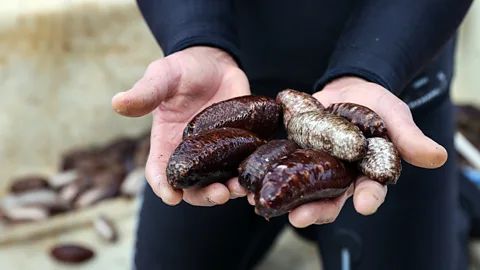 Mahmut Serdar Alakus/Getty Image
Mahmut Serdar Alakus/Getty ImageUnlike in humans and many other animals, when African spiny mice suffer an injury, they seem to only deploy certain types of macrophages that help the wound to heal without causing excessive inflammation and formation of scar tissue.
"Macrophages are the main orchestrator of ramping inflammation up and then dialling it down," explains Seifert. "They're like this conductor during a period of inflammation."
Lots of other things could be going on here, too, though. Sousa and colleagues found a particular enzyme appeared to be involved in the regeneration of spinal cords in African spiny mice, for example. But they still don't know which cell or cells express it.
Piecing together these complex puzzles is an essential next step on the road to developing treatments for humans inspired by African spiny mice. But, whether or not it ultimately proves successful, the research will take time.
Media hype over early-stage research in animals has often drawn the ire of scientists. There is even a Twitter account called @justsaysinmice, set up by a former researcher at Northeastern University, which is dedicated to pointing out that press articles often fail to make clear that potential treatments have only been shown to work in mice so far, not people.
"It's hard to know if the public is ready to comprehend how slow the progress of science can be sometimes," acknowledges Seifert.
One 2018 review found that studies on regeneration in non-human species had made "much progress" but that medical therapies based on this work are still some way off.
Yet while the road towards revolutionary drugs or therapies inspired by studies of African spiny mice may be long and uncertain, the possibility of finding life-changing treatments is too significant to ignore, argues Simmons. She explains that her own sister was diagnosed with a chronic illness when she was younger and that Simmons herself underwent multiple screenings to see whether she had it too, since the illness in question is hereditary.
"That really coloured my opinion of biomedicine – as an eight-year-old," she says.
Ultimately, the hope of saving or drastically improving millions of lives will always remain a powerful one.
And, while walking the path that may eventually lead us there, we have discovered truly amazing things about the biology of the spiny mouse.
"There's something going on at a cellular level which endows each of these different organs or tissues with some remarkable responses," reflects Seifert. "It is fascinating."
--
